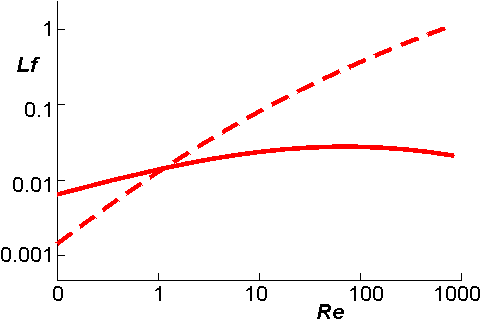|
|
Continuous flow reactorsThe advantages of immobilised enzymes as processing catalysts are most markedly appreciated in continuous flow reactors. In these, the average residence time of the substrate molecules within the reactor is far shorter than that of the immobilised-enzyme catalyst. This results in a far greater productivity from a fixed amount of enzyme than is achieved in batch processes. It also allows the reactor to handle substrates of low solubility by permitting the use of large volumes containing low concentrations of substrate. The constant reaction conditions may be expected to result in a purer and more reproducible product. There are two extremes of process kinetics in relation to continuous flow reactors;
The properties of the continuously operated fluidised bed reactor (FBR) lie, generally, somewhere between these extremes. An ordered series of CSTRs or FBRs may approximate, in use where the outlet of one reactor forms the inlet to the next reactor, to an equivalent PBR. The transport of momentum, heat and mass in these continuous reactors are important factors contributing to the resultant productivity. They are due to fluid flow and molecular and turbulent motions, and often described by means of a number of empirical relationships, involving dimensionless numbers. The most important of these is the Reynolds number (Re), which relates the inertial force due to the flow of solution to the viscous force resisting that flow. Low Re indicates streamlined flow whereas higher Re indicates progressively more turbulence, there being a critical value for Re, dependent on the configuration of the system, at which there is a transition from streamlined flow to turbulent flow. Re is defined in terms of Lfm/ h or Lf/n, where L is the characteristic length of the system, fm is the mass flow rate (g m−2 s−1), f is the fluid velocity (m s−1), h is the dynamic viscosity (g m−1s−1) and n is the kinematic viscosity (m2 s−1). Examples of the characteristic lengths in these definitions of Re are the particle diameter for flow past spherical particles, and the tube diameter for flow within hollow tubes. The value of the (characteristic length of the system) x (fluid velocity) for a stirred tank system may be taken as the (stirrer speed) x (stirrer diameter)2. Re is, therefore, higher at high flow rates and low viscosities. Another dimensionless number which is of use in describing and comparing continuous enzyme reactors is the Le Goff number (Lf), which expresses the efficiency with which the energy dissipated in producing the fluid flow is used to transport material (and heat) to the catalytic surface. Low values for Lf indicate a relatively high energetic and financial cost, in achieving contact between the catalytically active immobilised-enzyme surface and the substrate stream, and the consequent reduction in any external diffusion limitations. The Lf is higher for low pressure drops through the reactor, high flow rates and high conversions. The relationship between the Lf and the Re is shown schematically for a PBR and a CSTR in Figure 5.3, where it may be seen that the PBR is more efficient at fairly low Re but far less so at higher Re, reflecting the necessity for stirring the CSTR even at low flow rates and the increased backpressure in PBRs at high flow rates.
Figure 5.3. A diagram comparing the variation of Re with Lf for a PBR (———) and a CSTR (-----------). An FBR behaves similarly to the CSTR.
This page was established in 2004 and last updated by Martin
Chaplin |
